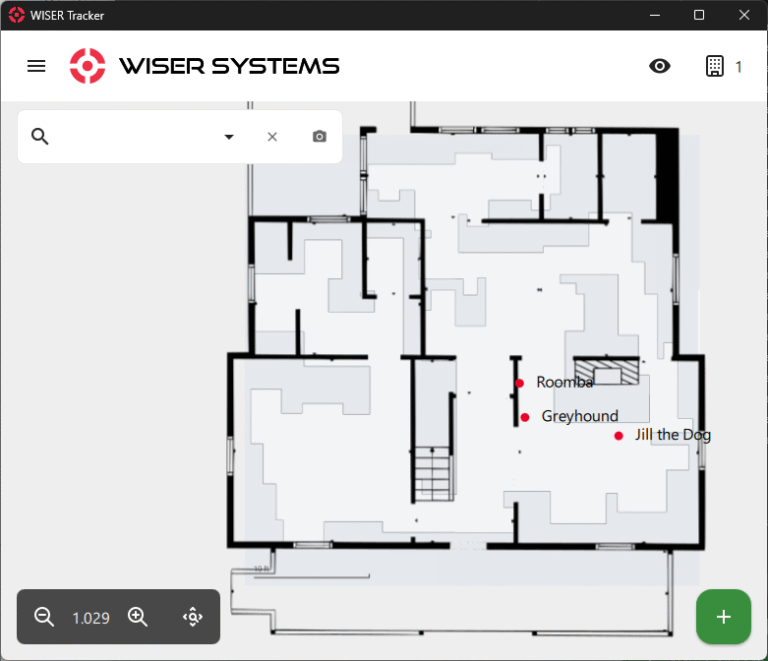
When making a purchasing decision, the first question is: Does it solve the problem? But the second is just as important and that is: What is the Return on Investment (ROI)? In fact, the second can be the most important when a project manager is making the case to purchasing to release funds to get the project started.
However, figuring out an ROI that is easy to understand and appropriately reflects your facility for a Real-Time Location System (RTLS) isn’t always straightforward. The benefits of that system are going to be spread out across multiple teams, machines, and processes and affect everything from reduced search time to improved equipment uptime. It can get complicated. That’s why this post breaks the process down into a practical, easy-to-follow framework for estimating the ROI of RTLS, and in this case, we’ll be looking at a real-world example at a BioPharma Manufacturer.
In biomanufacturing, knowledge of where items were and when is extremely important and mistakes can lead to regulatory citations. Yet even the most advanced facilities struggle with one deceptively simple challenge: how to keep track of dozens (or hundreds) of identical vats, bottles, and containers. When every unit looks the same and every process step — sterilization, irradiation, QC testing, packaging — follows a strict protocol, small inefficiencies can add up fast.
The Problem
In this case-study, the biomanufacturer makes sterilized solutions with slightly different requirements. They had trouble keeping track of hundreds of carts that carried identical containers with clear liquids inside. The carts and containers were metal, and barcode scanning didn’t work until you were very close. Workers spent hours looking for carts and delays in delivering carts to the correct workstations built up into machine downtime and a reduction in production efficiency.
Calculating Tangible ROI
Clearly a solution was needed, but plant managers needed an easy way to quantify the problem. At WISER we think of Tangible ROI as the benefits of WISER’s basic search and find tools. With WISER you can look for a tagged item on a map and see exactly where it is at that moment. We generally split this ROI into 3 areas: Labor Savings, Improved Production Efficiency, and Premium Freight and Penalty Avoidance. For this case, we expected most of the benefit to occur from the categories of labor savings and production efficiency.
As a note, most clients get added benefit as they use an RTLS system like WISER’s over time. Once they capture their time and location data, they can analyze it for bottlenecks and inefficiencies. That’s the longer-term Strategic ROI and we’ll discuss it in another article.
Labor Savings
Before implementation of the WISER system, multiple operators were involved in searching for materials each shift. These are highly trained individuals who understand complex protocols and the use of specialized machinery. The managers don’t want them running around looking for carts rather than operating equipment. By using a Real Time Location System, the plant could just look up the cart number on a WISER map and see exactly where it was. What once took half an hour of hunting and scanning different carts, now took minutes.
We created a sample excel file to lay this out. As you can see, we list the number of employees likely involved searching, how much time they spend hunting for carts, and then their likely fully loaded hourly rate. In this case, the spreadsheet does the math, but you can see how it’s a fairly straightforward equation to see this short-term benefit.
Labor efficiency (search time eliminated)
| Input | Value |
|---|---|
| Labor savings (# people) | 4 |
| Labor saved per week per person (hours) | 6 |
| Labor: Fully loaded hourly rate | $65 |
| Labor Savings Annually | $81,120 |
Improved Production Efficiency
Every hour a machine sits idle waiting for a missing batch is an hour of lost throughput. When we factor throughput per machine, and downstream dependencies, the savings multiply. Clearly, a key part of the ROI is direct improvement in output because machines can just be running more.
But to keep it simple, we’ll look at the improvement for the average machine to be up more and not look at the downstream effect. That can be for a larger, more complicated spreadsheet. As you can see in this section, the chart factors in:
- The likely number of machines affected
- The average amount of downtime per week
- The profit per widget produced
- The % of the profit attributed to each machine.
That last one can be tricky to calculate. To keep it easy you can start by spreading the percentage evenly across the machines involved. If it’s an extremely important step you can obviously increase that percentage.
The sheet again produced a likely improvement in the ROI value based on speeding up search and getting items to the correct machine quickly.
Improved Production Efficiency
| Number of machines | 10 |
| Downtime reduction in hours per week per machine | 6 |
| Throughput of widgets per hour per machine | 50 |
| Widget Profit | $5 |
| Profit margin contribution per process step per widget (%) | 10.0% |
| Improved Production Efficiency Annually | $ 78,000 |
ROI Results
When these two categories — labor, efficiency— were considered for this case, the annual savings from the WISER solution came in at around $160,000 resulting in a time to reach positive ROI (or time to value) in around four months. And those estimates were intentionally conservative. For many facilities, the payback could be even faster.
These are rough numbers based on WISER’s internal analysis and keep our client’s metrics and financials confidential. However, we hope the analysis helps you apply this method to determine the ROI for any RTLS system. We want you to have the confidence that you can see tangible results and reach an ROI well within 12 months of ownership. And of course any exercise like this should be tailored to the specifics of your site. You, of course, know your facility better than anyone.
These estimates don’t of course consider the longer-term benefits of the strategic ROI, such as improved quality control and compliance, accountability and trust in the data, and failure prevention which we will discuss in future articles.
We’re developing similar ROI models for other sectors of manufacturing, from food processing to chemicals.
If you’d like to understand your own potential savings, reach out and we’re happy to help you calculate the numbers. You can contact us via our website, email, or phone.



